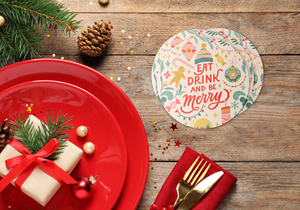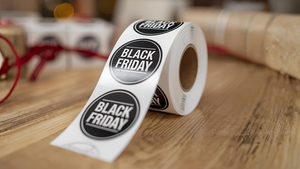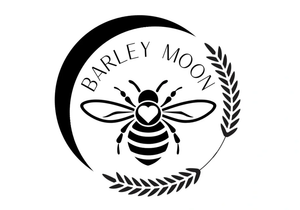Artwork Tips: How to Upload Images Without Losing Quality

Artwork Tips: How to Upload Images Without Losing Quality
You spent months putting together your branding, your logo, designing your labels and you are finally ready to start printing. The problem? When you upload your image, that logo or label you spent so much time and money on turns out blurry, pixelated, and much different than you were expecting.
It’s a problem we see all the time but thankfully there are a few ways to ensure the image you upload is crystal clear and ready for printing.
In this post, we’re going to discuss how you can upload your images without losing quality, including why it happens, tools for editing, and tips to make sure you get the best quality possible. Let’s dive in!
Common Problems with Image Quality
There are a number of reasons why an image might have quality issues – distorted colors, low resolution, blurriness, and more. Most of these mistakes come from failing to prepare an upload for the printer but oftentimes they are just little things we don’t even consider. Some common problems include:
Poor Camera Quality
If you’ve taken a picture on your camera in the last couple of years, you know the quality is amazing. However, many older smartphones still have poor camera quality and are not made with print standards in mind. Although the image may look great on your phone, it will quickly turn into a lower-quality image when being uploaded.
Bad Resizing
Many businesses use stock photos or pull pictures from the web to add to their image. However, this can be a problem for quality prints. Web images are not always the right size or might be subject to default compression, which might not be apparent when simply viewing it. However, just like resizing an image, you will certainly notice the difference when you upload to print.
Image Editing Tools For Better Printing

The great news is, while there are a number of common problems that lead to poor image quality, there are also solutions! Enter photo editing tools. There are a number of paid and free editing tools on the market making it easier than ever to make your images printer-ready. You can use them to resize, crop, and sharpen your uploads to get an image that pops!
Photoshop
Adobe Photoshop has enduring appeal as the original photo editing software because of its high quality and popular features for enhancing photos. It is used worldwide to help photographers, artists, and illustrators make their pictures perfect.
Although there is a learning curve when it comes to Photoshop, it has so many great features to help you get the best photo. There are also preset workspaces so that you only have the tools you need for your image.
Cost: $20.99 a month as a standalone, or part of Adobe’s Creative Cloud Photography Plan for $9.99
PicMonkey
While PicMonkey has impressive templates and unique features to help transform images into artwork, they also have everything you need to make basic image adjustments. You can edit with specific templates and utilize collaboration features if you need help.
PicMonkey offers a free seven-day trial, so you can see if it works for you before investing in it.
Cost: Basic is $7.99/month; Pro is $12.99/month
Canva
One of the most popular graphic design tools around, Canva has a loyal and sizable following because of its simple design and impressive features. With Canva’s freemium model, you can use their basic features for free and purchase more if needed.
Canva uses a simple drag-and-drop editor to make it easy to adjust your images, plus a Search button, so you don’t have to look all over to find what you need. The photo enhancer can help even those inexperienced in editing make a high-quality photo.
If you’re new to editing, Canva is a helpful way to go.
Cost: Canva is free, Canva Pro is $12.99 a month
Snappa
Advertised as software with “no learning curve,” Snappa is perfect for those who are new to photo editing. The horizontal toolbar on the upper left-hand corner has all that you need in one convenient spot. You can select the tools you need to customize it every time you open it.
If you are using stock photos but find the photo quality lacking, Snappa has high-resolution stock photos available. Plus, you can add any text or graphics quickly and easily.
Cost: Free for 1 user and up to 6,000 templates; Pro is $10/month; Team is $20/month
Gigapixel AI
Gigapixel AI harnesses Artificial Intelligence to compare your image against millions of similar images and creates new pixels based on its algorithm. This means that it can help you avoid the “pixelated” look that comes from trying to resize the photo too large. Your images will turn out sharp and clear when using this software.
Cost: $99.99/year
How to Upload Images to Stomp for Quality
Understanding the common image quality problems associated with printing is important as it can help you avoid making the mistakes noted. And while you can (and should) use image-editing software to improve your image quality, here are some other ways you can ensure you’re uploading high-quality images to Stomp:
Choose PNG over JPEG
While we accept JPG, GIF, PNG, BMP, PDF, AI, SVG, TIFF, and PSD file types, PNG retains quality no matter how often it is uploaded or edited. It compresses the image without destroying information or affecting the quality of the pixels. On the other hand, JPEG will go down in quality every time it is edited or saved. This can be an issue since an image is typically saved three to four times on the way to the printer.
Get the Right Size
You need to pay attention to the pixels per inch (or PPI) for the best prints. If there are too few pixels, the printer will make up pixels to fill empty space. If it’s too many pixels, though, the image will have to shrink smaller to fit it all.
Choose the right size to ensure the right amount of PPI for your print. Consider cropping if it is larger than you like to maintain the integrity of the picture.

Be Aware of DPI
DPI stands for “dots per inch.” For example, if you choose 300 DPI, this means that the printer will put out 300 tiny dots of ink on every inch of paper. To ensure your upload becomes a high-quality print, you will need to match the DPI with the PPI.
Get High-Quality Uploads
When you want prints that reflect your business, the right image matters. The last thing you want is to spend time and money to end up with a blurry or fuzzy coaster, sticker, or label. When you take the time to edit and size your image correctly, you can avoid many issues that lead to poor images. Plus, technology makes it easier than ever to make your images stand out.
We’re Here to Help
If you need help figuring out what images will work for your print, check out the Stomp guidelines here. Take your time to make quality uploads the next time you go to your printer. You won’t regret it!
Need to get some great prints, stickers, or promotional material for your business? We can help. Talk to one of our printing experts today to see how easy it is to get high-quality prints to promote your brand.
- Tags: Design
- Marketing Team








